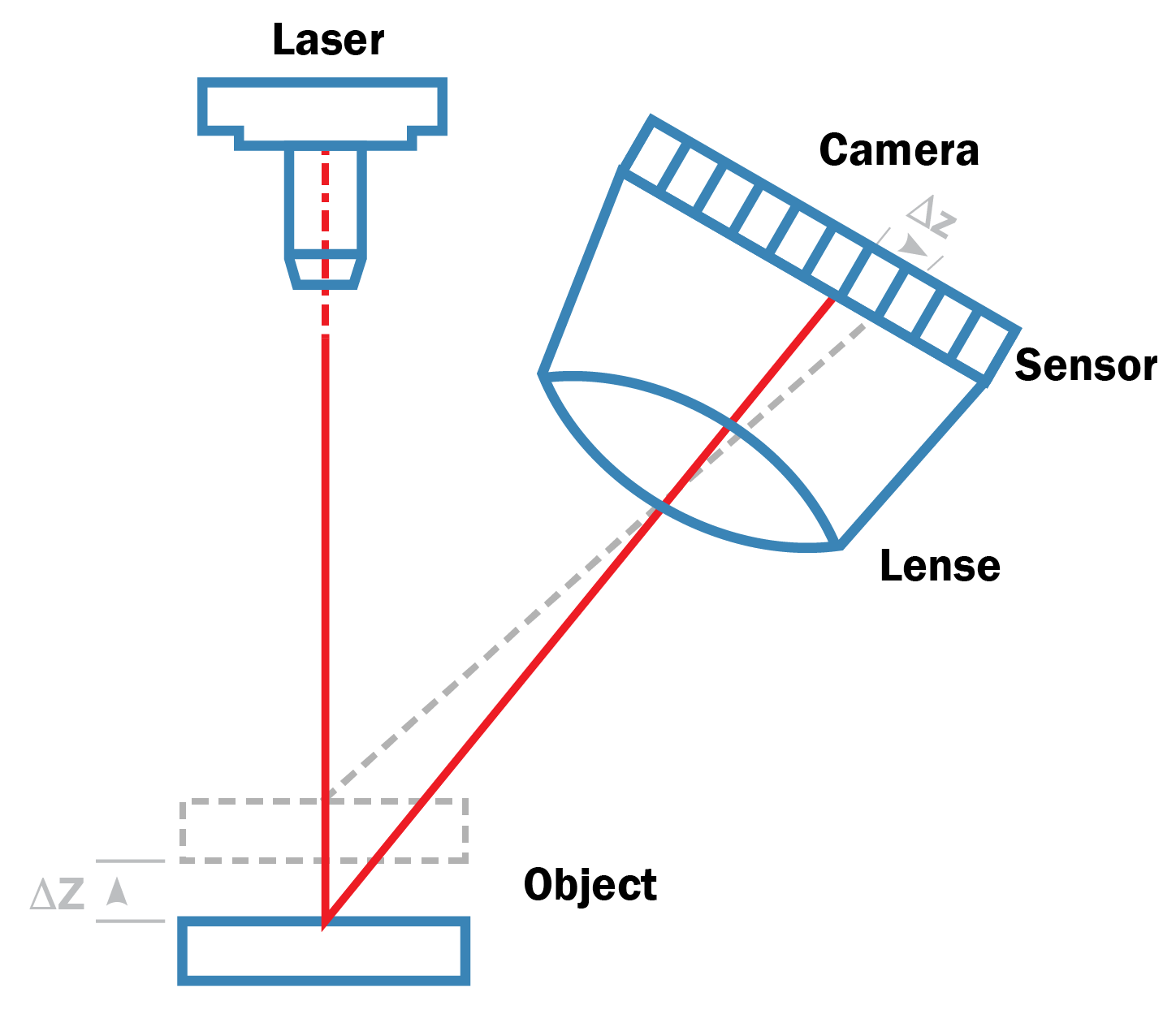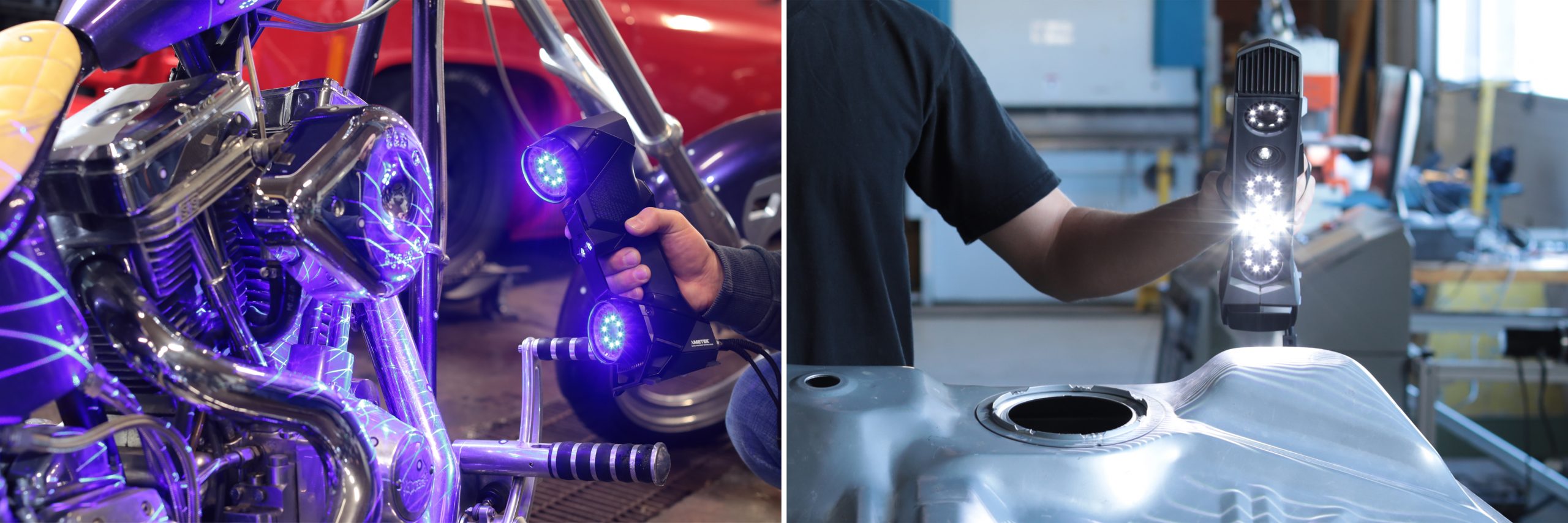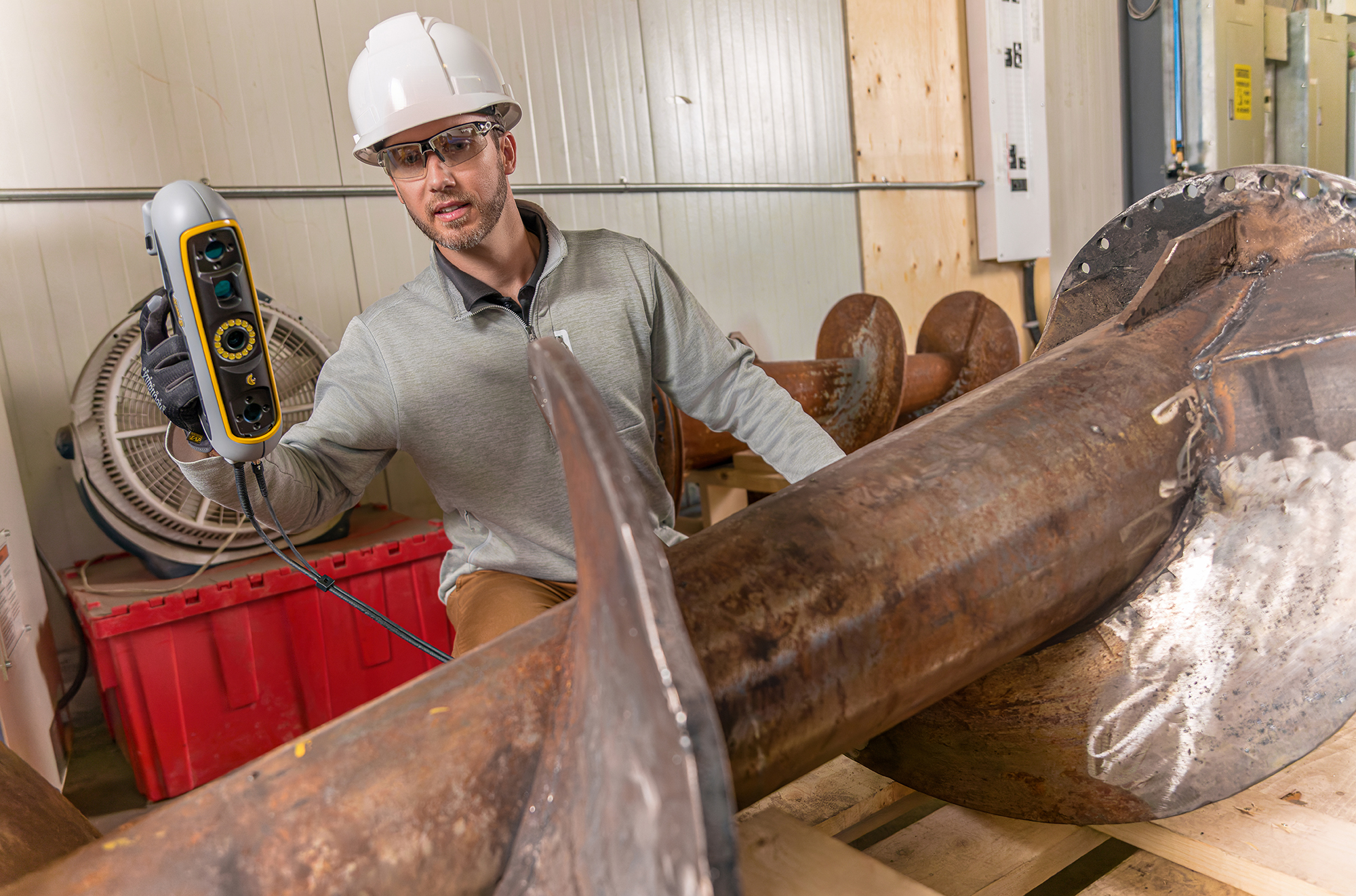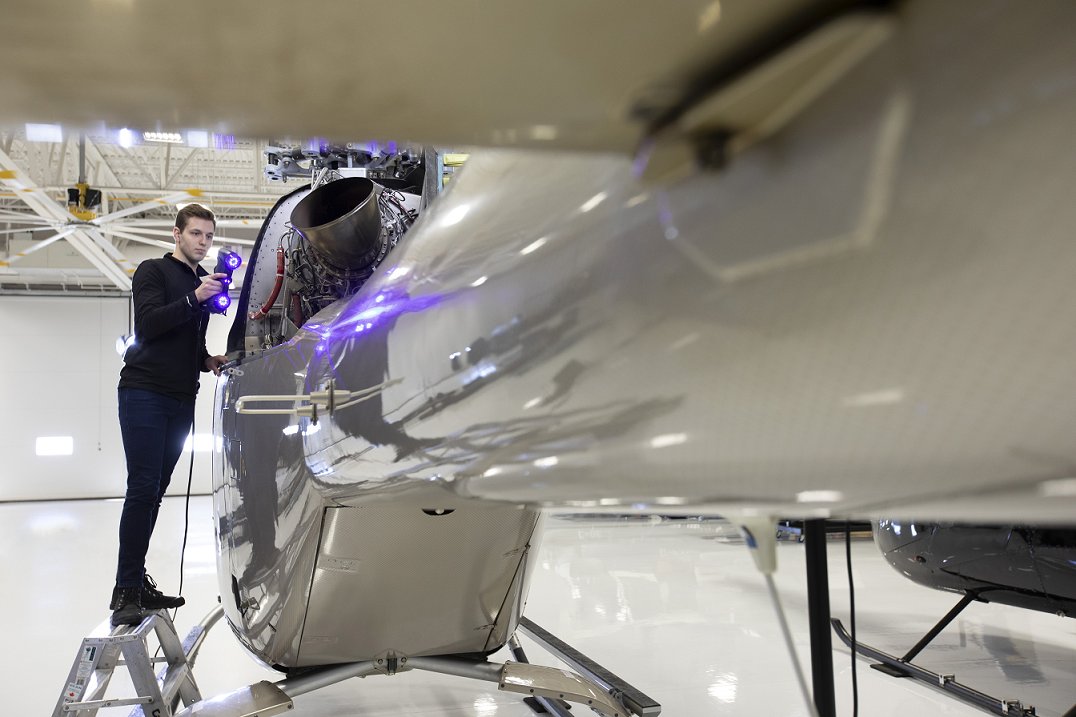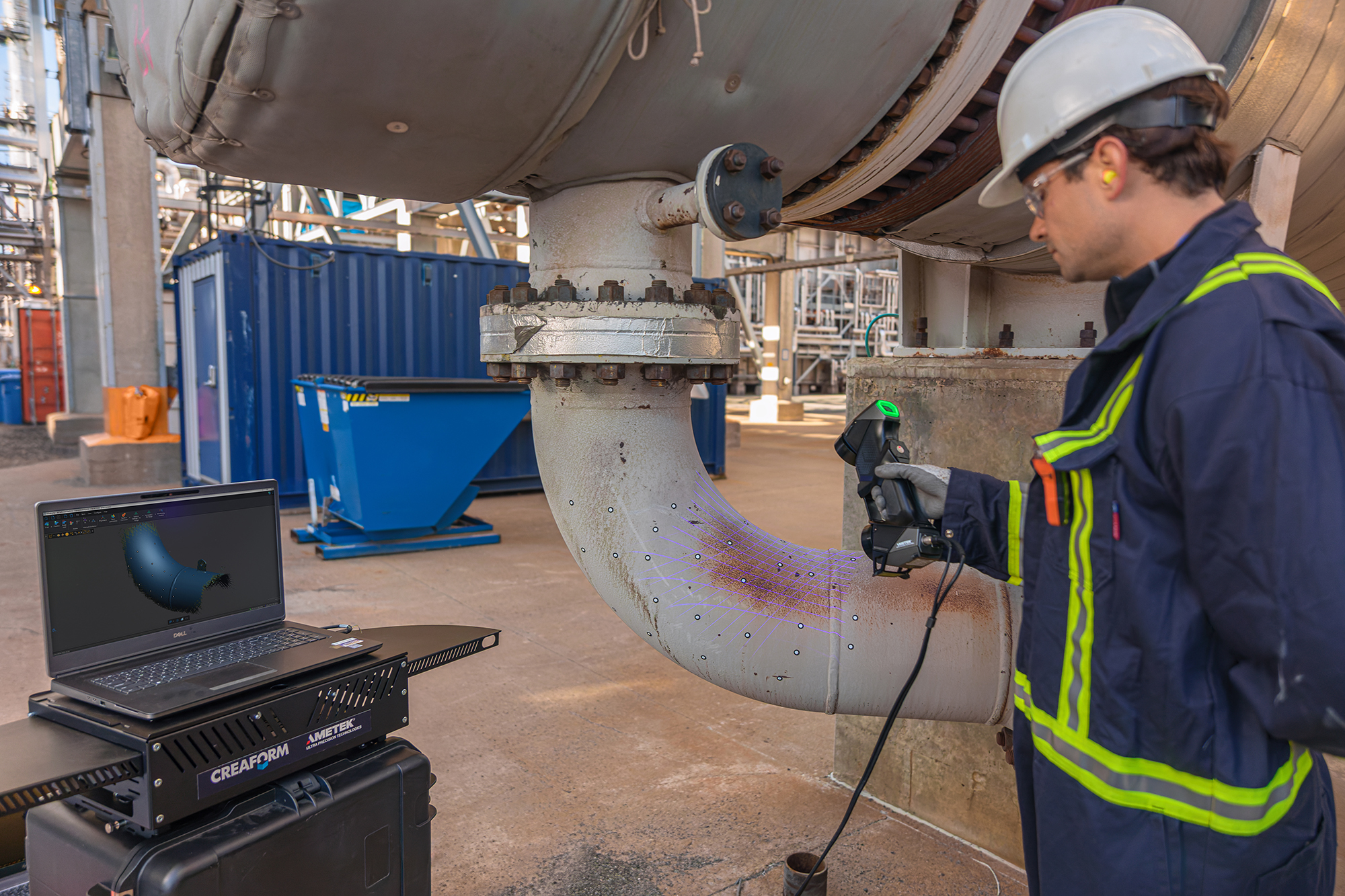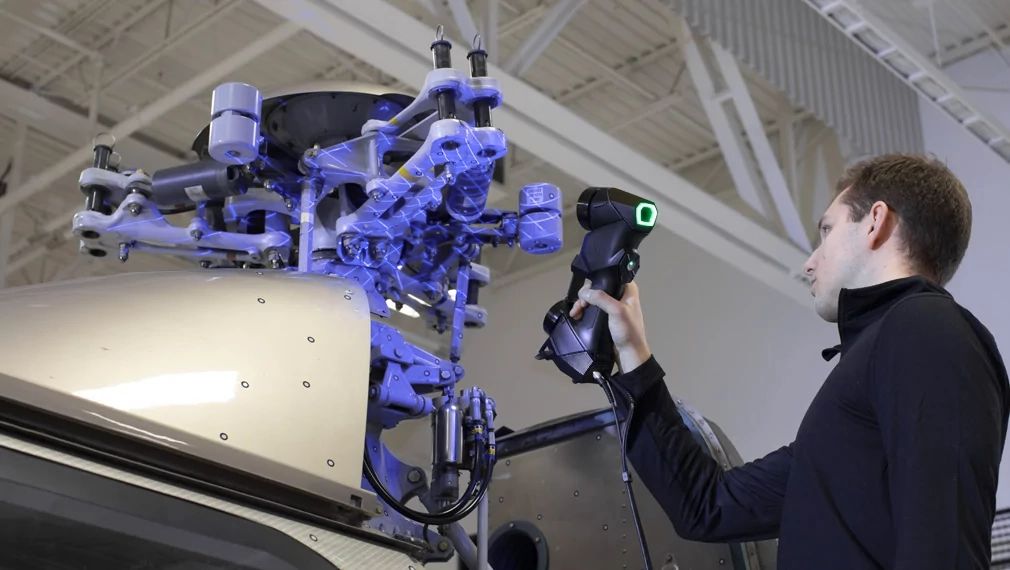July 24, 2024
Improving Vessel Integrity at a Refinery thanks to Advanced 3D Scanning Technology See the articleYou have been tasked with buying a 3D scanner. The only problem is figuring out where to start your search. You know what 3D scanning is but don’t know enough about it to make an informed choice.
Here, we will provide the information to help you answer the following questions:
- How do 3D scanners work?
- What are the different types of 3D handheld scanners?
- What should I consider when buying a 3D scanner?
- How do I choose the best handheld 3D scanner for my application and industry?
- How much should I pay for a 3D scanner?
After reading this blog, you will be able to choose the best 3D scanner for you based on your application and budget. You will even be able to help and guide your colleagues with their purchasing decisions.
- 1 Handheld 3D Scanners: Technology Fundamentals
- 2 What Are the Different Types of Handheld 3D Scanners?
- 3 Our 3D Scanner Buyer’s Guide: Things to Consider When Buying a 3D Scanner
- 4 How Do I Choose the Best 3D Scanner for Me?
- 4.1 Best Portable 3D Scanners for Different Industries
- 4.1.1 Best 3D scanners for the Aerospace Industry
- 4.1.2 Best 3D Scanners for the Automotive & Transportation Industries
- 4.1.3 Best 3D Scanners for the Manufacturing & Heavy Industries
- 4.1.4 Best 3D Scanners for the Oil & Gas and Other Power Generation Industries
- 4.1.5 Best 3D Scanners for the Medical Industry
- 4.1.6 Best 3D Scanners for Science & Education Applications
- 4.1 Best Portable 3D Scanners for Different Industries
- 5 Things to Consider When Choosing Your 3D Scanning Software
- 6 How Much Should You Pay for Your 3D Scanner?
- 7 Be Wise with Your Investment
Handheld 3D Scanners: Technology Fundamentals
How Do Different 3D Scanning Technologies Work?
3D scanners rely on different 3D scanning technologies to collect the 3D data needed to build 3D models. They can be classified into the following categories:
Triangulation-Based 3D Laser Scanner
As its name suggests, this technique involves three elements – the laser emitter, the laser reflection, and the camera – positioned in a triangle shape. Triangulation-based 3D laser scanners project laser lines that are reflected on the object being measured. A camera then detects the laser reflections to assess the object’s shape, geometry, and texture.
Laser triangulation allows for the measuring of physical objects and environments. Depending on the object’s or environment’s shape, geometry, or texture, the laser will strike different locations on the surface. As a result, the angle and position of the reflected laser beam will differ in the camera’s field of view. Based on the position of the reflected spot on the sensor and the distance from the laser source to the sensor, the distance to the object can be calculated.
Handheld laser 3D scanners create 3D models through triangulation, even if the device is in motion. This is achieved by determining the position of the scanner using reference features (typically adhesive reflective targets on the surface being scanned).
There are multiple reasons to favor triangulation-based 3D laser scanners. These scanners are portable while still providing excellent accuracy. Therefore, they can be used in production environments where there are vibrations and instabilities without affecting the accuracy of the results. Their price, however, is proportional to your desired level of accuracy.
Structured-Light 3D Scanner
Structured-light 3D scanners use the triangulation technique described above but rely on structured light instead of lasers. This type of 3D scanner projects a series of light rays onto the surface of an object. Then, a camera measures the deformation of the projected pattern and calculates the distance from the 3D scanner to the object’s surface for every point in the field of view. The structured light source used for 3D scanning can be white or blue.
The main reason for choosing a structured-light 3D scanner over a laser 3D scanner is speed. Instead of scanning single points simultaneously, the structured-light technology scans the entire field of view in a fraction of a second, allowing large areas to be scanned exponentially faster. Most structured-light light technology is also eye-safe. However, structured-light 3D scanners are more sensitive to lighting conditions and reflective surfaces, making them difficult to use outdoors in the sunlight.
Depth-Sensing Camera
Depth-sensing cameras are used in autonomous vehicles such as robots, tractors, and forklifts to help them move around without the need for manual navigation. These devices use a light source (laser or LED) to project light patterns in the nearby environment. Based on the distortions obtained, the sensor calculates the distance to the different obstacles, enabling the vehicle to avoid them. Through this process, the device or equipment integrated with the depth-sensing camera can make real-time intelligent decisions while moving autonomously.
The main advantages of depth-sensing cameras are their simplicity and affordability. However, the measurement accuracy and level of detail can be affected by the distance from the measured objects. Depth-sensing cameras still manage to detect objects’ presence, but their accuracy levels prevent them from being precise measuring instruments.
Photogrammetry
Photogrammetry uses photographic images to get 3D information about physical objects or their environments. It involves overlapping photos of large objects, buildings, or locations and converting them into 3D models or 3D imagery using mathematical algorithms. Photogrammetry can also be used as a realistic 3D asset creation tool.
The main advantage of photogrammetry is that there is no size limit for objects that can be measured. However, since photogrammetry relies on images, some limitations arise when objects have the same uniform color. In those cases, the produced models often contain gaps that affect the measurement accuracy and level of detail of 3D models.
LiDAR Technology
Light detection and ranging (LiDAR) technology measures variable distances by targeting objects or surfaces with a laser or infrared light and measuring how long it takes for the reflected light to return to the sensor. Mounted on a drone, it can produce high-resolution maps and digital 3D images of the shape of the Earth, which are commonly used in surveying, geography, geology, or forestry. It is also used in the control and navigation of autonomous vehicles, including Ingenuity, the helicopter that flew over the terrain of Mars.
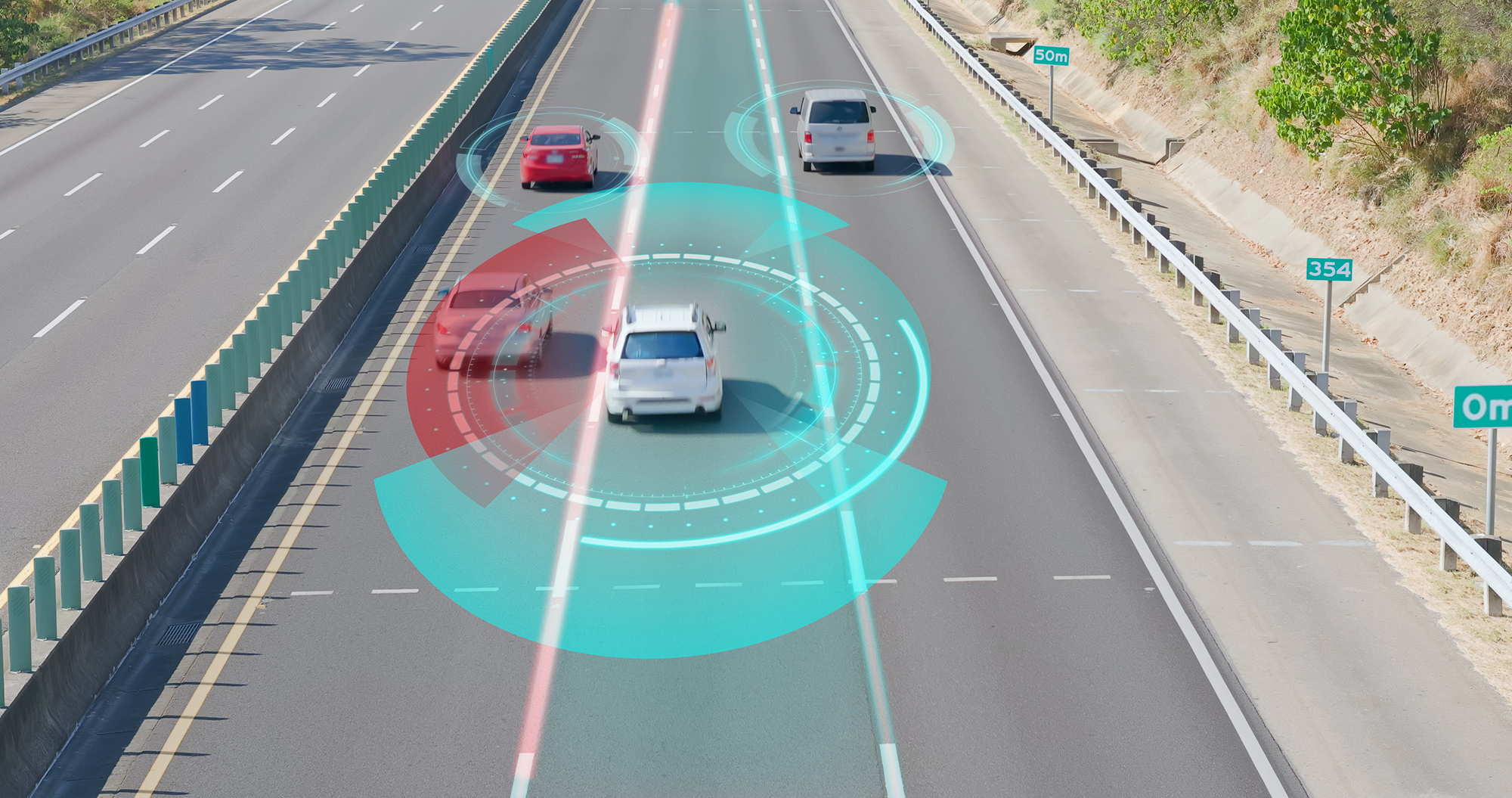
LiDAR technology used in the control and navigation of autonomous vehicles, monitoring the distance between vehicles.
Although LiDAR images are recreations rather than photos, the technology offers several advantages over depth-sensing cameras. While cameras provide 2D representations of environments, LiDAR displays 3D views of the world that are more accurate. Moreover, LIDAR can see objects at night, as it has its own built-in light source. In contrast, camera-based systems need sufficient light to function optimally, becoming more unreliable during nighttime.
What Are the Different Types of Handheld 3D Scanners?
Handheld 3D scanners can be classified into three groups according to their use. Of course, their accuracy and versatility increase with their grade, as do their price and reliability.
Affordable 3D Scanners
The best affordable 3D scanners are aimed at delivering value without emptying your bank account. Manufacturers with well-established reputations generally offer entry-level 3D scanners with attractive accuracy and a sufficient level of detail for different applications, including heritage preservation and virtual reproductions of damaged pieces, artifact collections, and architectural models.
Their attractive prices are the principal reason users opt for this group. Nevertheless, these devices remain powerful 3D-measurement instruments that can maximize the potential of research projects, school activities, or creative endeavors.
Due to their simplicity and ease of use, these affordable plug-and-play 3D scanners are a good starting point for users taking their first steps into 3D scanning. Students and beginners can rely on their good level of performance without needing extensive training, setup, or preparation.
Professional 3D Scanners
The best professional 3D scanners are designed to offer efficiency in product development and for reverse engineering teams who need to measure complex parts and surfaces quickly. Such professionals need speed and simplicity in scanning any object, regardless of size and geometry, with fewer targets and without part preparation. Excellent image resolution is important for them to acquire texture and color with a sufficient level of detail.
With their instant meshing and seamless integration to 3D modeling and CAD software, professional 3D scanners are the most efficient 3D scanners when it comes to speeding up the measurement workflow—from setup to real-time scans and ready-to-use files.
They address the specific needs of technology innovators, professionals, and small business owners who need to develop better products that suit customers’ needs and inquiries, providing a competitive advantage by accelerating their time to market.
Metrology-Grade 3D Scanners
The best metrology-grade 3D scanners can be recognized through their impressive scan quality and accreditation to the ISO-17025 standard. The “metrology-grade” designation refers specifically to the accuracy, resolution, and measurement reliability, which make these devices the most-trusted 3D scanners available on the market.
They are engineered for quality control and quality assurance experts or metrologists who need to generate highly accurate 3D measurements and high-resolution results with the best scan quality, regardless of the measurement setup or environmental instabilities.
With metrology-grade 3D scanners, manufacturing companies can assign all critical inspections of high-tolerance features to the coordinate measuring machine (CMM), while any remaining inspections can be redirected to the 3D scanner. They ensure product quality, improve diagnostics on reported quality issues, and accelerate first article inspections (FAI) by adhering to strict requirements.
Our 3D Scanner Buyer’s Guide: Things to Consider When Buying a 3D Scanner
What part do you need to scan? What is your purpose for scanning it? These two answers will orient your research, as scanning landing gear for quality control or historical artifacts for heritage preservation have different intents and, consequently, do not require the same 3D scanner.
How large is the object you need to scan?
Do you need to scan an entire airplane, a full car chassis, or intricate components to be assembled in an engine? Whether a few millimeters or multiple meters, the part size is the most obvious parameter to consider before buying a 3D scanner since you need a scanner that can handle the volume you must capture. Nonetheless, size constraints are less problematic now with handheld 3D scanners that enable the user to manually wave the device around the part, measuring large areas in just a few minutes.
Versatility—the ability to measure a wide range of sizes and surface finishes with a single device—is another aspect to consider before choosing a 3D scanner. A handheld 3D scanner that can acquire 3D data of shiny and highly detailed objects of all sizes is undoubtedly an asset in any measuring toolkit. The investment will be profitable, as the probe can be used for several purposes.
What scanning resolution do you need?
Do you need a high level of detail (e.g., scanning small injection plastic parts or tiny mechanical gears)? The better the mesh resolution, the more points are included in the mesh and the closer they are together. This results in a smoother, more detailed 3D model. The scan quality will automatically be higher, as will the 3D scanner’s price.
As a higher mesh resolution means more detail, this will result in larger, more complex files that require a high-end, gaming-quality PC to run 3D scanning software and load the enormous amount of captured 3D data.
Furthermore, if you work on critical features with tight tolerances, it’s important that the scanner’s measurements must be closely accurate to the part’s actual size. If you work in quality control in the aerospace industry, chances are high that you want the 3D scanner with the highest accuracy, providing you with the best scan quality. As usual, price and accuracy are directly related.
How quickly do you need to scan different objects?
How much time do you have to acquire and process your 3D data? Time is money, so shorter measurement times are always better. Because the 3D scanner’s instant display shows the measured area on the computer screen in real time, it facilitates and accelerates the scanning session.
As mentioned earlier, structured-light 3D scanners measure more points per second thanks to their light stripes, meaning that most objects can be scanned in minutes. Consequently, 3D data can be quickly integrated into CAD or 3D printing software.
With instant meshing and seamless integration into 3D modeling software, the entire measurement workflow is accelerated, positively impacting the pace of product development and consequently leading to faster time to market.
How Do I Choose the Best 3D Scanner for Me?
Best Portable 3D Scanners for Different Industries
Every industry benefits from 3D scanning technology. Thanks to 3D scanners, companies from all industrial sectors can improve their manufacturing workflows, optimize their product development by reducing the number of iterations, and enhance the quality of their products.
Best 3D scanners for the Aerospace Industry
From ribs and stringers to fuel nozzles and turbo pumps, airplanes are made up of thousands of components of various sizes and shapes, often with specialized finishes and treatments. The quality of each piece must be controlled based on tight performance criteria and tolerances.
To do so, the industry must rely on certified measuring instruments with the highest possible accuracy. CMMs are unquestionably the most accurate metrology equipment, but they take time to operate and must be handled by trained and experienced employees. Due to high demand, CMMs are often overloaded, and bottlenecks are common, leading to productivity issues.
Nevertheless, with a metrology-grade 3D scanner, quality managers have more latitude. They can inspect critical dimensions of high-tolerance features with a CMM, while any remaining controls can be handled by 3D scanning technology, regardless of size, shape, and alloy. In summation, the best 3D scanners for the aerospace industry must be highly accurate, ISO-certified, and versatile.
Best 3D Scanners for the Automotive & Transportation Industries
The volume of vehicles produced by major automotive manufacturers every hour, every day, and every year is astonishing. The quality control and quality assurance processes must keep pace with this production capacity so that yield is maintained when samples are being inspected and so that downtown is limited, with problems on the line identified and fixed quickly.
The design process can also be challenging, as clay model builders and digital modelers must combine their unique arts to create appealing cars. To do so, they need time to refine their designs. They must be able to transition between CAD and clay quickly to make as many improvements as they want.
The modeling team also needs accurate 3D measurements with the finest level of detail to comprehend the clay model and make better decisions. This is where 3D scanning technology comes in. The best 3D scanners for the automotive industry must be quick and provide precise, high-resolution, and accurate results.
Best 3D Scanners for the Manufacturing & Heavy Industries
To work in the manufacturing and heavy industries, measurement systems must sustain harsh environments where oscillations and vibrations are common. They must also comply with the required accuracy standards and be versatile and functional with a wide variety of surface finishes, geometries, and sizes.
Because parts and castings being inspected may be large and difficult to move, users must be able to carry their 3D scanner effortlessly to the production plant, measuring station, or workshop. Moreover, the integration of measurement results into existing workflows should be seamless, with simple and easy data post-processing.
In short, the best 3D scanners for manufacturing and heavy industries are portable, accurate, and versatile. They also work in complete synergy with integrated 3D software platforms.
Best 3D Scanners for the Oil & Gas and Other Power Generation Industries
The oil and gas industry needs to be able to analyze data and generate reports onsite to make quick repair decisions so that latency is minimized and pipes are reburied more quickly. Pipeline owners should also be able to conserve data over time and compare the evolution of damage on pipes and structures.
Human-independent results during data acquisition are also a prerequisite for eliminating measurement variations and ambiguity in result interpretation. By removing human error from the equation, measurements are the same regardless of the technician’s skills and experience.
Therefore, the best 3D scanners for the oil and gas industry are those that provide pipeline owners and NDT service companies with peace of mind by offering accurate data, reliable diagnoses, and traceable results.
Best 3D Scanners for the Medical Industry
The medical industry – particularly as it pertains to orthotic and prosthetic services – requires the capturing of body parts with non-contact devices to create perfect physical shapes and to design comfortable orthoses or prostheses.
Since physicians are not 3D scanning experts, they need simple 3D scanners and user-friendly software that they can master quickly and without extensive training. In addition, the 3D scanner should be ready to use in less than five minutes in any environment, making the process seamless and worry-free for patients.
Therefore, the best 3D scanners for the medical industry are safe, intuitive, and quick to set up. They must also be versatile to capture the complex and organic shapes of the body.
Best 3D Scanners for Science & Education Applications
Educational programs integrating 3D scanning technology into engineering courses demonstrate state-of-the-art techniques and offer students the knowledge they need to land their dream jobs in the industry.
Teachers and researchers must show future engineers the fundamentals of engineering based on industry requirements. To do so, they must stay up to date with the newest technologies and trends, such as laser and structured-light 3D scanners; this will also help capture the student’s attention and interest.
Therefore, the best 3D scanners for science and education applications are designed for high-demand areas in the industry, such as quality control and reverse engineering. Plug-and-play devices and user-friendly software are essential for students to learn 3D scanning effectively and for their teachers to quickly become 3D scanning experts.
Things to Consider When Choosing Your 3D Scanning Software
Regardless of the industry in which you work, consider choosing an integrated 3D software platform that offers an intuitive, user-friendly working environment, as this guarantees optimal user experience, seamless integration with 3D scanners, and the shortest time to usable 3D data. Moreover, opt for the application suite with sophisticated algorithms because they ensure high accuracy and data quality; this is particularly valid for quality control applications. Finally, encourage your provider to continue improving its platform by developing new capabilities and sending updates to make your experience simpler, faster, and more intuitive.
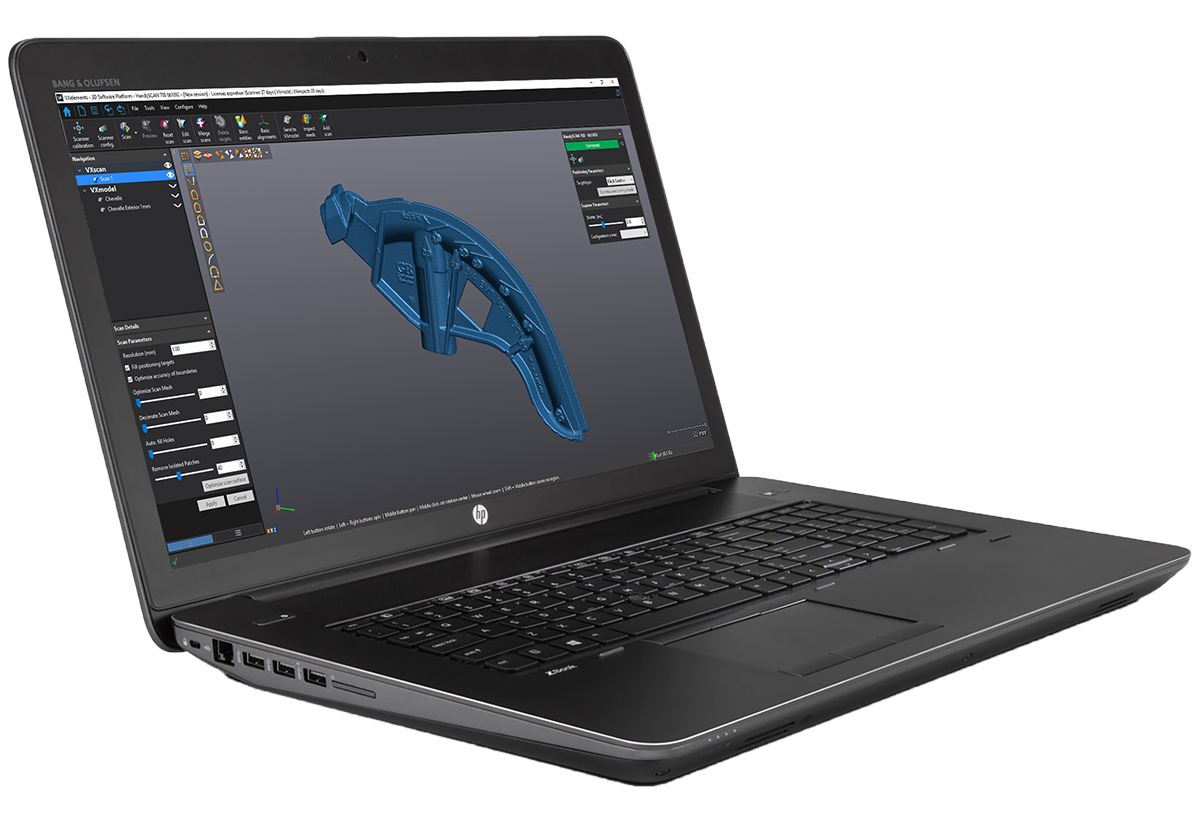
Intuitive, user-friendly working environment offered in an integrated 3D scanning software platform.
How Much Should You Pay for Your 3D Scanner?
Are you looking for an entry-level, affordable, and easy-to-use 3D scanner that students will mainly use? Or would a medium-priced 3D scanner be better suited to accelerate your product development and reduce development costs? Or should you opt for an industrial-level, metrology-grade 3D scanner with the scan quality, accuracy, and measurement reliability to conduct quality inspection? The 3D scanner market has adapted over time to cover all possible needs and budgets.
Best Budget 3D Scanners (Under $1,000)
As mentioned, there is a direct link between pricing and scan quality. For under $1,000, the optical components and cameras in the 3D scanner cannot generate the quality level required for industrial applications like reverse engineering or product development. However, these 3D scanners can be good starting points for basic applications like leisure activities or creative endeavors, which do not require exact accuracy. Budget 3D scanners will help you become more comfortable with data acquisition and processing without breaking the bank.
Best 3D Scanner Apps for iPhone
You may not have noticed it, but if you own an iPhone or iPad Pro, your device’s camera module is integrated with LiDAR. This means that iPhone apps like Polycam, RoomScan LiDAR, or Canvas: Pocket 3D Room Scanner can scan rooms and objects to create 3D representations of your environment. What an excellent way to familiarize yourself with 3D scanning at no extra cost!
Best Medium-Priced 3D Scanners (Between $1,000 and $10,000)
In this price range, it is possible to find 3D scanners with the accuracy level required for applications in heritage preservation (e.g., digitalizing artifacts), in healthcare (e.g., capturing body parts and creating customized orthotics and prosthetics), or education (e.g., showing students the fundamentals of 3D scanning). These medium-priced 3D scanners can also offer a good introduction to CAD and 3D printing for objects that do not require a very fine level of detail.
Nevertheless, any professional with more advanced applications related to, for example, quality control, quality assurance, product development, and reverse engineering should aim for industrial 3D scanners, which offer the scan quality required to reproduce the shape and complexity of the scanned objects accurately.
Best Industrial and Professional 3D Scanners (Over $10,000)
In this price range, industrials and professionals can expect the accuracy, speed, and versatility required to validate the conformity and quality of parts, regardless of size, shape, material, surface finish, and complexity. These industrial and professional 3D scanners might involve a higher budget, but they also measure more data faster and in finer detail, saving precious time in inspection or product development.
Why are metrology-grade 3D scanners so expensive? If you’ve come this far, you are probably asking this exact question, wondering if you should start saving now to buy a top-of-the-line device. First, you need to identify your needs and application. A budget 3D scanner can be more than enough for non-professional applications, such as home or school use. However, if you’re looking for the highest scan quality, accuracy, speed, and versatility, invest in an industrial and professional 3D scanner. It’s as simple as that. These 3D scanners are engineered for demanding applications like quality control, reverse engineering, and product development.
Their scan quality is a crucial part of important activities within research and development (R&D). Manufacturers must invest time and resources (both human and financial) to test optical components and develop software algorithms. Only industrial and professional 3D scanners can deliver the accuracy, reliability, and rigor required in industrial applications. Consequently, their price is higher.
Nevertheless, it’s worth noting that their higher price does not cover only the 3D scanning device. It also comes with continuous training, software upgrades, repair and loan services, and local support in your own language. In addition, they are built to last a generation, which might not be the case for budget 3D scanners that often disappear from the market after only a few years, along with their suppliers, who may find themselves facing financial difficulties.
Be Wise with Your Investment
Start by identifying your application and questioning your needs. Remember that only serious R&D programs can deliver the accuracy, reliability, and rigor required for industrial applications. Consequently, if you’re looking for a proven and trusted 3D scanner to accomplish professional tasks, we strongly recommend investing in a professional and industrial 3D scanner.

